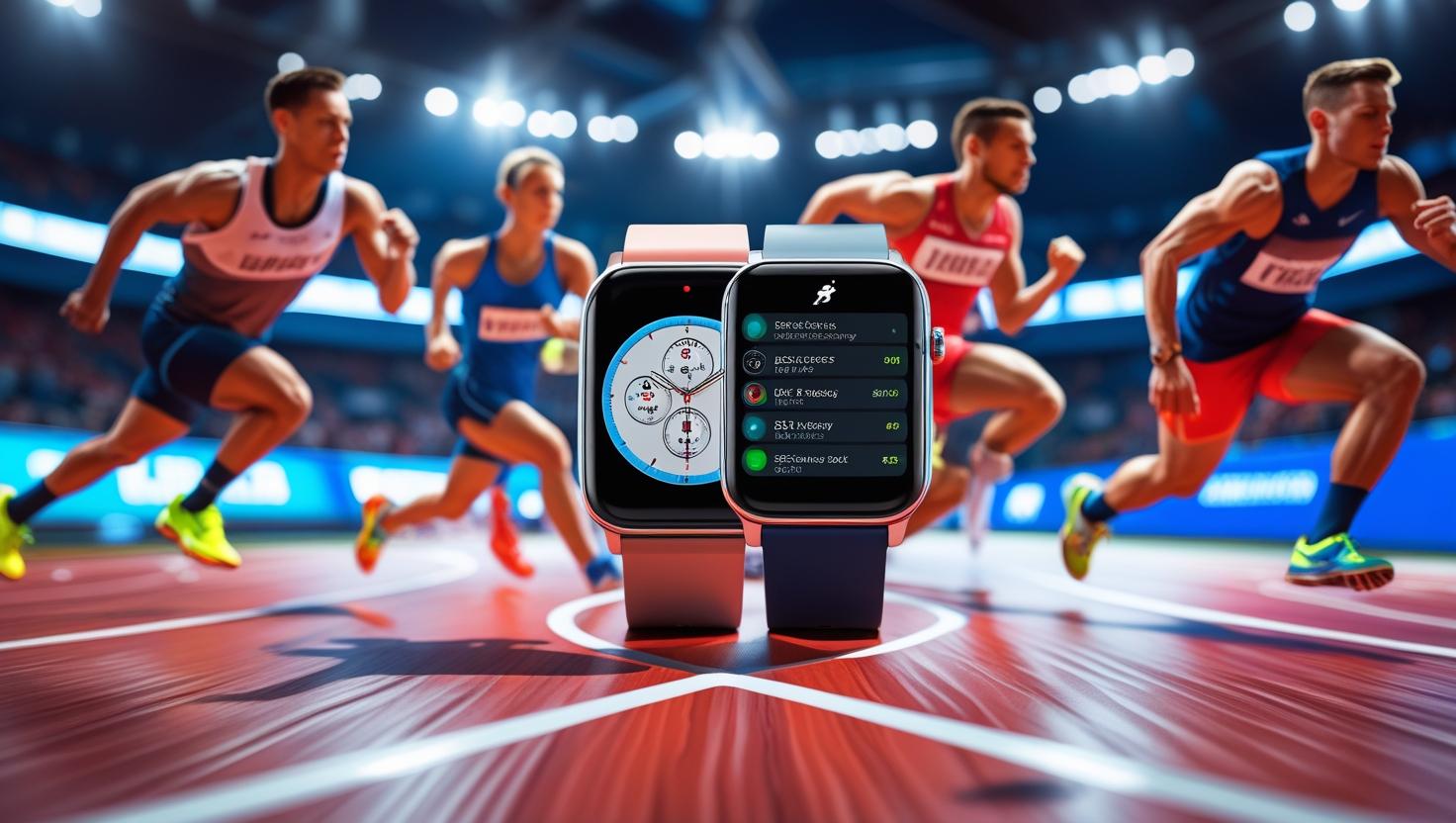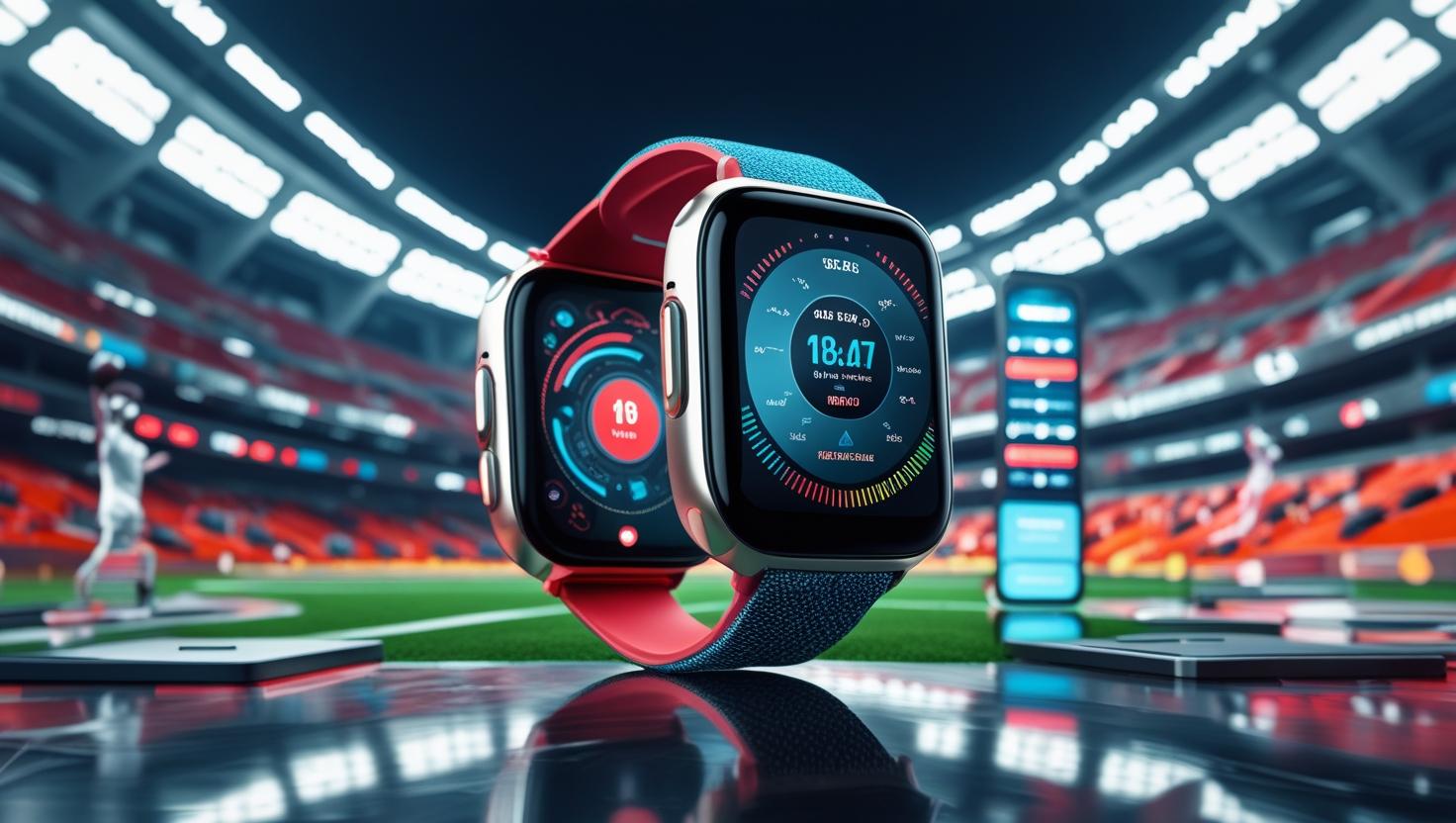Sports technology is undergoing a rapid transformation, reshaping how athletes train, compete, and recover. With advancements in artificial intelligence (AI), wearable devices, virtual reality (VR), and data analytics, the future of sports technology presents immense potential. This article examines the key opportunities that will define the industry and revolutionize sports in the years ahead.
The global sports technology market size is expected to grow from USD 34.25 billion in 2025 to USD 68.70 billion by 2030, growing at a CAGR of 14.9% during the forecast period.

The Role of Artificial Intelligence in Sports Performance
Artificial intelligence is revolutionizing sports by delivering real-time insights into player performance, strategy optimization, and injury prevention. AI-powered algorithms analyze vast datasets to enhance decision-making for coaches and athletes. Performance analysis has reached new heights with AI tracking player movements, speed, and endurance to refine training programs. Additionally, machine learning models assess injury risks by monitoring fatigue and biomechanics, helping athletes extend their careers. AI also plays a crucial role in game strategy by simulating opponent tactics, enabling teams to develop winning approaches. The integration of AI in sports technology ensures smarter training, improved gameplay, and long-term athletic success.
Wearable Technology and Smart Gear
Wearable devices have become indispensable for athletes, offering real-time health and performance metrics. From smartwatches to biometric sensors, these technologies track heart rate, muscle activity, and hydration levels with precision. Fitness tracking has evolved significantly, with wearables monitoring workouts to ensure optimal performance and recovery. Injury prevention has also benefited, as advanced sensors detect muscle strain and reduce the risk of overtraining. Beyond athlete performance, wearable technology enhances fan engagement through smart jerseys embedded with live stat-tracking capabilities. As these innovations continue to advance, wearables will play an increasingly vital role in personalized athlete development.
Virtual and Augmented Reality in Training and Fan Experience
Virtual reality and augmented reality are transforming both athlete training and fan engagement. VR simulations allow players to practice in highly realistic virtual environments without physical strain, while AR enhances live broadcasts with interactive statistics and immersive replays. Athletes now use VR to simulate game scenarios, refining their skills in a controlled setting. Meanwhile, AR overlays real-time data during live events, creating a more engaging viewing experience for fans. Additionally, VR is proving valuable in rehabilitation, helping injured athletes recover both mentally and physically. As VR and AR technologies become more accessible, their applications in sports will expand dramatically.
Data Analytics and Sports Science
Data-driven decision-making is revolutionizing sports at every level, from amateur leagues to professional competitions. Advanced analytics enable teams to evaluate player performance, optimize strategies, and identify emerging talent. Player scouting has been transformed by big data, which identifies promising athletes based on performance metrics and predictive modeling. Game optimization has also improved, with analytics refining team formations and play styles for maximum efficiency. Beyond the field, teams leverage data to personalize fan experiences, from targeted ticket sales to customized merchandise. The future of sports technology will increasingly rely on data analytics to maintain a competitive edge.
Smart Stadiums and IoT Integration
The Internet of Things (IoT) is revolutionizing stadium experiences by enhancing security, convenience, and fan engagement. Smart stadiums utilize IoT for contactless entry through facial recognition and RFID tickets, streamlining access for attendees. Real-time updates via IoT sensors provide fans with live information on seat availability and concession wait times, improving overall convenience. Additionally, smart stadiums prioritize energy efficiency with automated lighting and HVAC systems that reduce operational costs. These innovations not only enhance the fan experience but also contribute to sustainability efforts. The continued growth of IoT in sports venues represents a major opportunity in sports technology.
E-Sports and Digital Sports Platforms
E-sports has emerged as one of the fastest-growing sectors in sports technology, attracting millions of viewers and players globally. Digital platforms facilitate competitive gaming, virtual tournaments, and interactive fan experiences. Live streaming on platforms like Twitch and YouTube Gaming has significantly boosted e-sports viewership, creating new revenue streams. Virtual competitions now offer real-world prizes, further increasing participation and engagement. Brands are capitalizing on this trend through sponsorships and advertising, making e-sports a lucrative market. The rapid expansion of e-sports presents vast opportunities for investors and developers in the sports technology landscape.
Biotechnology and Performance Enhancement
Biotechnology is pushing the boundaries of human performance through genetic research, advanced nutrition, and recovery science. Gene editing technologies like CRISPR may soon enable enhancements in muscle growth and endurance, revolutionizing athletic potential. Personalized nutrition plans based on DNA analysis are optimizing energy levels and recovery times for athletes. Additionally, cutting-edge recovery technologies such as cryotherapy and hyperbaric chambers are accelerating injury healing. These biotech innovations are set to redefine the limits of athletic performance in the coming years.
Download PDF Brochure @ https://www.marketsandmarkets.com/pdfdownloadNew.asp?id=104958738
Sustainability in Sports Tech
Eco-friendly innovations are gaining momentum in sports, from sustainable equipment to energy-efficient stadiums. Green stadiums powered by renewable energy sources are reducing the carbon footprint of major sporting events. Sportswear and equipment manufacturers are increasingly using recycled materials to minimize environmental impact. Leagues and organizations are adopting carbon-neutral practices to promote sustainability. These efforts highlight the growing importance of environmental responsibility in the future of sports technology.

The Future of Sports Broadcasting
Advanced broadcasting technologies, including 5G and holographic displays, are transforming how fans experience sports. Ultra-HD and 360-degree views provide immersive viewing experiences, bringing fans closer to the action. AI-driven interactive commentary offers personalized insights, enhancing engagement. Holographic replays enable 3D match analysis, revolutionizing how games are reviewed and analyzed. These innovations are setting new standards for sports broadcasting and fan interaction.
Investment and Career Opportunities in Sports Tech
The expanding demand for sports technology is creating new opportunities for investors, startups, and professionals. Innovative startups are developing cutting-edge solutions to enhance athletic performance and fan engagement. Careers in data science, engineering, and sports analytics are in high demand as the industry evolves. Venture capital is increasingly flowing into sports tech ventures, fueling further innovation. The future opportunities in sports technology offer significant potential for economic growth and professional advancement.
The future opportunities in sports technology are vast and transformative, driven by advancements in AI, wearables, VR, data analytics, and sustainability. These innovations are enhancing athletic performance, fan engagement, and operational efficiency across the sports industry. As technology continues to evolve, stakeholders must stay ahead of trends to capitalize on emerging opportunities. The dynamic landscape of sports technology promises exciting developments that will shape the future of athletics for years to come.
Explore In-Depth Semiconductor & Electronics Market Research
https://www.marketsandmarkets.com/semiconductorand-electonics-market-research-87.html
1. What are the key future opportunities in sports technology?
The most promising opportunities include AI-driven analytics, wearable tech, VR training, smart stadiums, and e-sports.
2. How is AI used in sports technology?
AI enhances performance analysis, predicts injuries, and optimizes game strategies through data-driven insights.
3. What role does wearable technology play in sports?
Wearables track fitness metrics, prevent injuries, and improve fan engagement through real-time data.
4. How will VR change sports training?
VR enables athletes to simulate game scenarios, improving skills without physical exertion.
5. Why is sustainability important in sports tech?
Sustainable innovations reduce environmental impact while maintaining high performance standards.
See The Latest Semiconductor Reports:
Intelligent Transportation System Market Size, Share & Trends: https://www.marketsandmarkets.com/Market-Reports/intelligent-transport-systems-its-market-764.html
Artificial Intelligence in Manufacturing Market Size, Share & Trends: https://www.marketsandmarkets.com/Market-Reports/artificial-intelligence-manufacturing-market-72679105.html
Al-based Image Analysis Market Size, Share & Trends : https://www.marketsandmarkets.com/Market-Reports/ai-based-image-analysis-market-225042980.html
Automated Stationary NDT & Inspection Systems Market Size, Share & Trends: https://www.marketsandmarkets.com/Market-Reports/automated-stationary-ndt-inspection-systems-market-233564506.html
